Contents
- Healthcare Infrastructure
- Three-Tiered Structure in the District
- The Rise of Private Healthcare
- Age Old Practices & Remedies
- Pune’s Naturopathy Revival Movement
- Medical Education & Research
- Armed Forces Medical College
- Byramjee Jeejeebhoy Government Medical College
- Z V M Unani Medical College & Hospital
- The Maharashtra Institute of Medical Education and Research (MIMER)
- Dr. D.Y. Patil Medical College, Hospital & Research Centre
- Regional Ayurveda Research Institute (RARI)
- Medical Researchers & Scientists
- Sudam Kate
- History of Major Disease Epidemics & Outbreaks in Pune
- Evolution into a Public Health Research Hub
- Serum Institute of India
- National Institute of Virology
- Response to the COVID-19 Pandemic
- Sanitation | Public Toilets & Cleanliness
- Graphs
- Healthcare Facilities and Services
- A. Public and Govt-Aided Medical Facilities
- B. Private Healthcare Facilities
- C. Approved vs Working Anganwadi
- D. Anganwadi Building Types
- E. Anganwadi Workers
- F. Patients in In-Patients Department
- G. Patients in Outpatients Department
- H. Outpatient-to-Inpatient Ratio
- I. Patients Treated in Public Facilities
- J. Operations Conducted
- K. Hysterectomies Performed
- L. Share of Households with Access to Health Amenities
- Morbidity and Mortality
- A. Reported Deaths
- B. Cause of Death
- C. Reported Child and Infant Deaths
- D. Reported Infant Deaths
- E. Select Causes of Infant Death
- F. Number of Children Diseased
- G. Population with High Blood Sugar
- H. Population with Very High Blood Sugar
- I. Population with Mildly Elevated Blood Pressure
- J. Population with Moderately or Severely High Hypertension
- K. Women Examined for Cancer
- L. Alcohol and Tobacco Consumption
- Maternal and Newborn Health
- A. Reported Deliveries
- B. Institutional Births: Public vs Private
- C. Home Births: Skilled vs Non-Skilled Attendants
- D. Live Birth Rate
- E. Still Birth Rate
- F. Maternal Deaths
- G. Registered Births
- H. C-section Deliveries: Public vs Private
- I. Institutional Deliveries through C-Section
- J. Deliveries through C-Section: Public vs Private Facilities
- K. Reported Abortions
- L. Medical Terminations of Pregnancy: Public vs Private
- M. MTPs in Public Institutions before and after 12 Weeks
- N. Average Out of Pocket Expenditure per Delivery in Public Health Facilities
- O. Registrations for Antenatal Care
- P. Antenatal Care Registrations Done in First Trimester
- Q. Iron Folic Acid Consumption Among Pregnant Women
- R. Access to Postnatal Care from Health Personnel Within 2 Days of Delivery
- S. Children Breastfed within One Hour of Birth
- T. Children (6-23 months) Receiving an Adequate Diet
- U. Sex Ratio at Birth
- V. Births Registered with Civil Authority
- W. Institutional Deliveries through C-section
- X. C-section Deliveries: Public vs Private
- Family Planning
- A. Population Using Family Planning Methods
- B. Usage Rate of Select Family Planning Methods
- C. Sterilizations Conducted (Public vs Private Facilities)
- D. Vasectomies
- E. Tubectomies
- F. Contraceptives Distributed
- G. IUD Insertions: Public vs Private
- H. Female Sterilization Rate
- I. Women’s Unmet Need for Family Planning
- J. Fertile Couples in Family Welfare Programs
- K. Family Welfare Centers
- L. Progress of Family Welfare Programs
- Immunization
- A. Vaccinations under the Maternal and Childcare Program
- B. Infants Given the Oral Polio Vaccine
- C. Infants Given the Bacillus Calmette Guerin (BCG) Vaccine
- D. Infants Given Hepatitis Vaccine (Birth Dose)
- E. Infants Given the Pentavalent Vaccines
- F. Infants Given the Measles or Measles Rubella Vaccines
- G. Infants Given the Rotavirus Vaccines
- H. Fully Immunized Children
- I. Adverse Effects of Immunization
- J. Percentage of Children Fully Immunized
- K. Vaccination Rate (Children Aged 12 to 23 months)
- L. Children Primarily Vaccinated in (Public vs Private Health Facilities)
- Nutrition
- A. Children with Nutritional Deficits or Excess
- B. Population Overweight or Obese
- C. Population with Low BMI
- D. Prevalence of Anaemia
- E. Moderately Anaemic Women
- F. Women with Severe Anaemia being Treated at an Institution
- G. Malnourishment Among Infants in Anganwadis
- Sources
PUNE
Health
Last updated on 26 July 2025. Help us improve the information on this page by clicking on suggest edits or writing to us.
Pune is a district where diverse medical traditions flourish. The city area, especially, stands out for its comparatively well-developed infrastructure, which sets it apart from other regions in Maharashtra. Notably, journalist Aditi Pai in her article (2014) describes Pune as “an ideal healthcare hub” due to its preventive health check-ups, prompt emergency services, and quality healthcare facilities. It is important to note, however, that this infrastructure is largely concentrated in urbanized areas, particularly within the Pune City, Pimpri-Chinchwad, Haveli, and Mulshi talukas. Interestingly, it can be said that Pune’s healthcare system is truly a compelling example of how different medical traditions can coexist and enrich one another.
While Pune City is known for its advanced hospitals and medical technologies, it also maintains strong ties to traditional healing practices. Figures like Mahatma Gandhi and Dinshaw Mehta played key roles in revitalizing these ancient practices, a legacy that still influences the district’s healthcare landscape today. In recent years, notably, Pune has expanded its medical offerings to include not only a wide range of multispecialty and super-specialty hospitals but also increasingly specialized fields such as plastic and cosmetic surgery. Areas like Koregaon Park have become a cluster for these specialties. At the same time, ancient healing methods, including physiotherapy and chiropractic care, continue to thrive and are becoming more integrated into the district’s contemporary health ecosystem, offering a more holistic approach to well-being.
Healthcare Infrastructure
Much like other regions in India, Pune’s healthcare infrastructure follows a multi-tiered system that involves both public and private sectors. Currently, the public healthcare system is tiered into primary, secondary, and tertiary levels. Primary care is provided through Sub Centres and Primary Health Centres (PHCs), while secondary care is managed by Community Health Centres (CHCs) and Sub-District hospitals. Tertiary care, the highest level, includes Medical Colleges and District Hospitals. This system has evolved and been refined over time, influenced by national healthcare reforms.
Three-Tiered Structure in the District
Pune district, home to both tier 1 and tier 3 cities, stands out among Maharashtra’s districts for its comprehensive healthcare infrastructure. Notably, Pune is one of the few districts in the state that offers a publicly accessible healthcare infrastructure dataset, which provides ward-wise information on the city’s clinics, hospitals, and dispensaries. According to this government data, 11 wards of Pune City are home to at least 50 government hospitals and around 100 private hospitals. This extensive healthcare network is key not only in serving the local population but also in positioning the city as a growing hub for medical tourism, drawing patients both from across India and abroad.
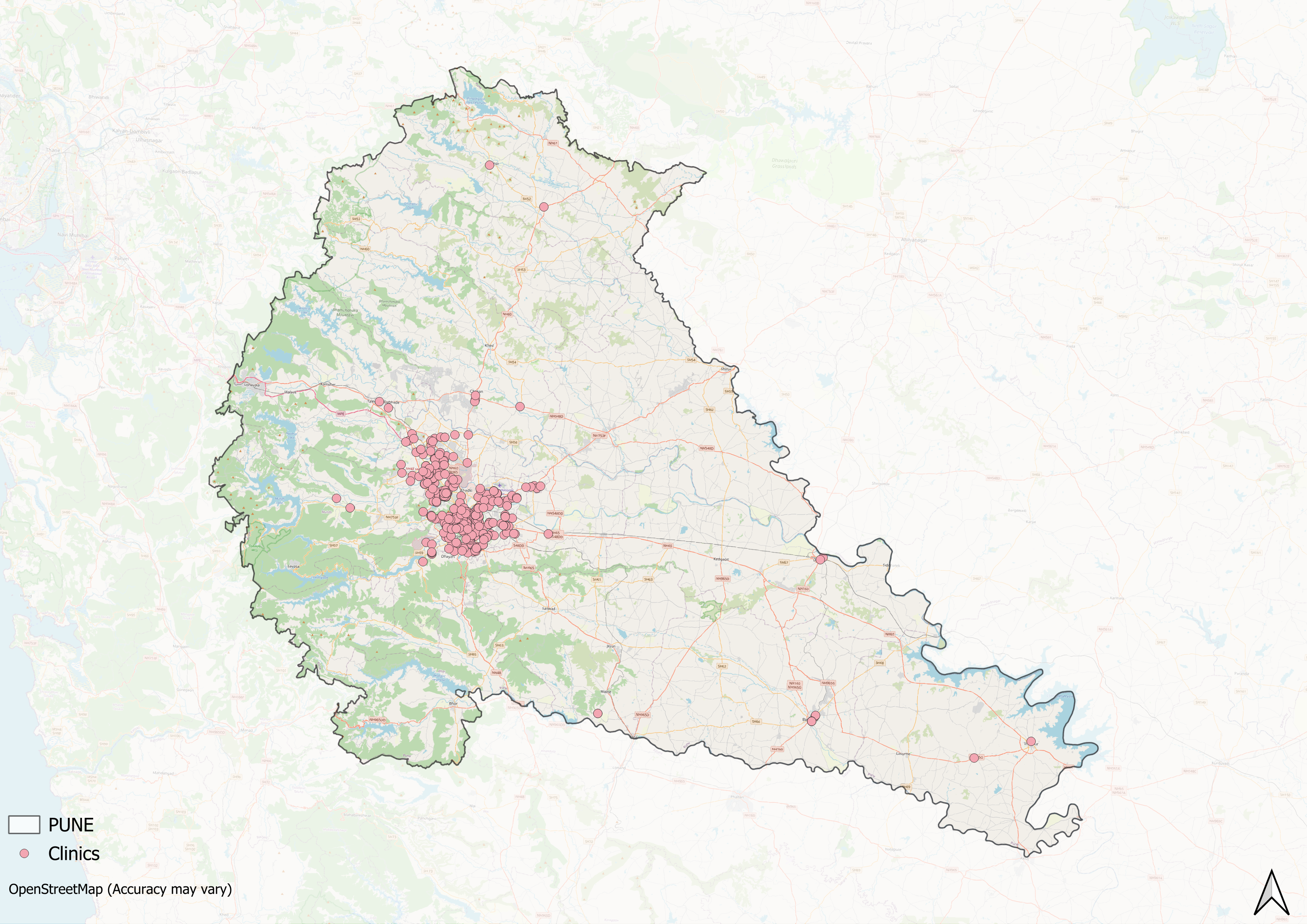
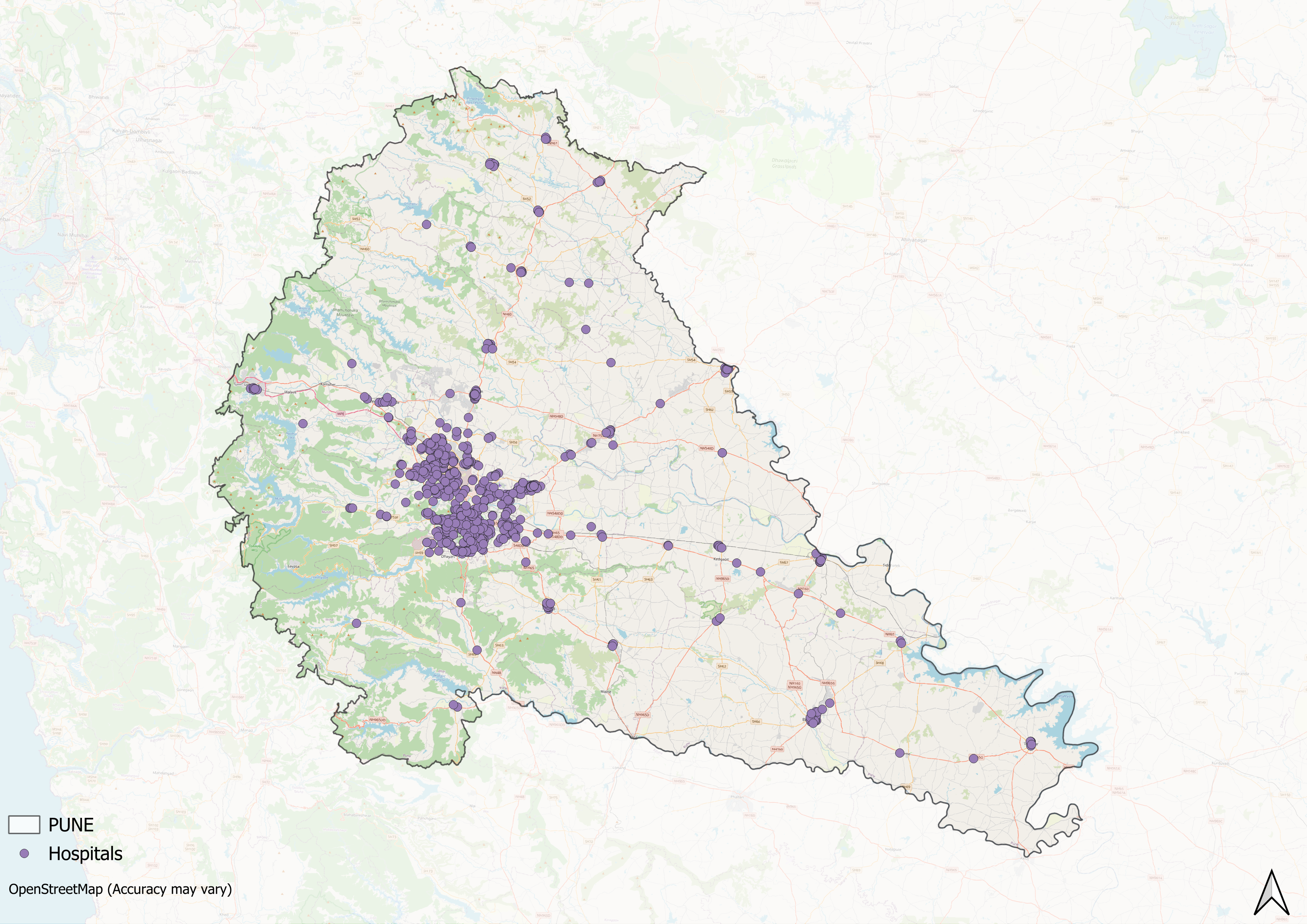
This is evident in the increasing number of international patients arriving in Pune. According to the article “Pune has adequate facilities to be developed as a medical tourism hub” (2024), patients from countries such as Yemen, Iraq, Oman, South Sudan, and Liberia are already seeking treatment here. The city’s healthcare infrastructure, built over decades, has become a competitive advantage in this growing industry. The Ministry of Tourism has taken note, with many advocating for Pune to be recognized as the hub for India’s medical tourism sector.
Pune’s three-tiered healthcare infrastructure traces its roots to the 19th and 20th centuries, when the foundation for today’s system was established. Records from the colonial district gazetteer (1885) show that Pune received considerable attention in terms of medical infrastructure, distinguishing it from many other regions in the state. By this time, the city had already developed both tertiary and primary care facilities, which was, in many ways, a rare combination for that period.
Among the prominent institutions established during this era were Sassoon General Hospital, the Roman Catholic Orphanage, and the Charitable Infirmary and Leper Hospital. These facilities not only provided vital care to the local population but also addressed the pressing public health challenges of the time. Perhaps it can be said that philanthropic contributions played a central role in this development, as reflected in the names of many of these institutions.
Notably, even the Sassoon General Hospital, now one of the most well-known government hospitals in Pune and a “household name” among locals, was founded through the donation of Sir Sassoon, a Jewish benefactor, who wished “to relieve the wants of the poor of Poona.” Alongside this, several grant-in-aid dispensaries were established, all of which contributed significantly to the development of the district’s public healthcare system during that era.
![The Sassoon General Hospital in Pune is one of the largest state-run hospitals in the district. The Byramjee Jeejeebhoy (BJ) Medical College is attached to it.[1]](/media/statistic/images/maharashtra/pune/health/the-sassoon-general-hospital-in-pune-is-one-of-_OIlKksT.jpg)
Alongside these developments, the city also saw the establishment of specialized care facilities. Most notable among these was the Regional Mental Hospital at Yerwada, which today ranks among Asia’s largest mental healthcare institutions. However, it’s important to note that while the public infrastructure for mental healthcare was built during this period, the care provided at the time was not necessarily forward-looking. Mental health care was heavily stigmatized, and conditions were often associated with shame. Even today, the hospital continues to face numerous controversies, particularly regarding issues like the quality of care, infrastructure, and treatment approaches.
Still, in recent years, there has been notable progress in Pune when it comes to mental healthcare infrastructure. The increase of private psychiatry clinics throughout the city, as noted by locals, serves as one indicator of this development. Additionally, the Maharashtra Institute of Mental Health in Pune, a state-level institution under the Government of Maharashtra, is actively involved in the field of mental health, contributing to both education and infrastructure efforts within the region. These trends suggest a growing focus on improving mental healthcare services in the district.
The Rise of Private Healthcare
If the 19th century laid the groundwork for public healthcare infrastructure, the 20th century marked the rise of private healthcare in Pune. A key moment in this shift occurred in 1946 with the establishment of Jehangir Nursing Home by Sir Cowasji and Lady Hirabai. The story behind the establishment of this facility is both poignant and significant. Although the hospital today is known for its towering buildings and extensive capacity, it began with a more humble beginning. The couple donated land for this purpose, initially naming the facility “Ready Money Villa,” before renaming it in memory of their son, Jehangir, who had passed away. Starting as a small nursing home with just eight beds, Jehangir Nursing Home, as described on its website, went on to become Pune’s first private hospital.
![Jehangir Hospital[2]](/media/statistic/images/maharashtra/pune/health/jehangir-hospital2-63cba86d.png)
This was a transformative moment in the district’s healthcare history and, according to locals, played a crucial role in establishing Pune as an emerging hub for medical tourism. Over the years, Jehangir Hospital has become known for its comprehensive care, particularly in areas like stroke management and IVF treatments. The hospital has also been a center for groundbreaking medical research and innovation, contributing to Pune’s expanding medical landscape.
Almost a decade later, in 1959, Padma Bhushan awardee Dr. K.B. Grant established Ruby Hall Clinic, which has become another “household name” within the district. Started as a modest four-bedded nursing home, over time, the clinic transformed into a 600-bed multi-specialty hospital and earned national recognition as Pune’s first nationally accredited multi-specialty center.
These foundational private healthcare institutions paved the way for a diverse and specialized healthcare environment in Pune. Notably, as locals state, hospitals and chains such as Sancheti, Noble Hospitals, Sahyadri Super Specialty, Manipal, Inamdar, and Apollo Spectra are playing a crucial role in providing specialized care across various medical fields.
Alongside these private sector developments, Pune has seen a thriving primary care sector with clinics and dispensaries set up by private practitioners, contributing to a more localized and accessible healthcare environment. Additionally, many efforts have been taken by public entities, too, when it comes to primary and secondary care. As reported by Umesh Isalkar (2019), Pune stands out for having the highest number of accredited government-run Primary Health Centers (PHCs) in the region. To reduce geographic disparities within the healthcare landscape, the public health department has also taken action to extend this infrastructure to suburban areas. In a bid to cater to the growing suburban population, new rural hospitals are set to be established in Dehu, Khadakwasla, and Ur.
Despite these developments, locals often express concerns about the state of both private and public healthcare. In particular, public hospitals face overwhelming caseloads, with many residents recounting how they need to stand in line from morning to evening just to receive a check-up. The pressures on Pune’s healthcare infrastructure became particularly evident during the COVID-19 pandemic when hospitals were inundated with patients, causing strain on the system. According to a Punekar article (2024), “During the pandemic, Pune saw an influx of patients from rural areas, cities, and western Maharashtra, overwhelming the Maharashtra State Government’s health system.” This surge exposed how demand has outpaced existing infrastructure, highlighting the need for both technological advancement and a more sustainable healthcare model.
Pune’s evolving healthcare landscape mirrors the positive and negative trends faced by many urban centers globally. The surge of private healthcare institutions indicates increasing health awareness, local medical expertise, and a growing demand for specialized services. However, this rise has also emphasized the gaps within Pune’s healthcare system, particularly regarding affordability, ethics, accessibility, and equity. Moving forward, addressing these gaps will perhaps be key in ensuring that Pune’s healthcare system can adequately serve all residents, regardless of income or location.
Age Old Practices & Remedies
While Pune is often recognized for its state-of-the-art hospitals and modern healthcare infrastructure, there’s another, quieter aspect of its healthcare system worth noting: the role the district played in the revival of an ancient healing method known as the “nature cure therapy.” This system of healing draws from centuries of careful observation by Indian rishis and munis, who developed sophisticated principles of health and disease management. These principles were also propounded and advanced by Western practitioners like Hippocrates and Vincent Priessnitz.
Over time, these practices became less prominent, overshadowed by allopathic medicine. Yet, even before India’s independence, a resurgence of interest in these systems began to take shape, particularly in Pune, where influential figures played a significant role in reintroducing traditional healing methods into the district’s healthcare framework.
Pune’s Naturopathy Revival Movement
The early 20th century saw Pune at the forefront of a naturopathy revival, a movement notably marked by the establishment of the Nature Cure Clinic and Sanatorium, which is now known as the National Institute of Naturopathy (NIN). Founded in 1929 by Dr. Dinshaw K. Mehta, the clinic was a pioneer in promoting natural healing methods.

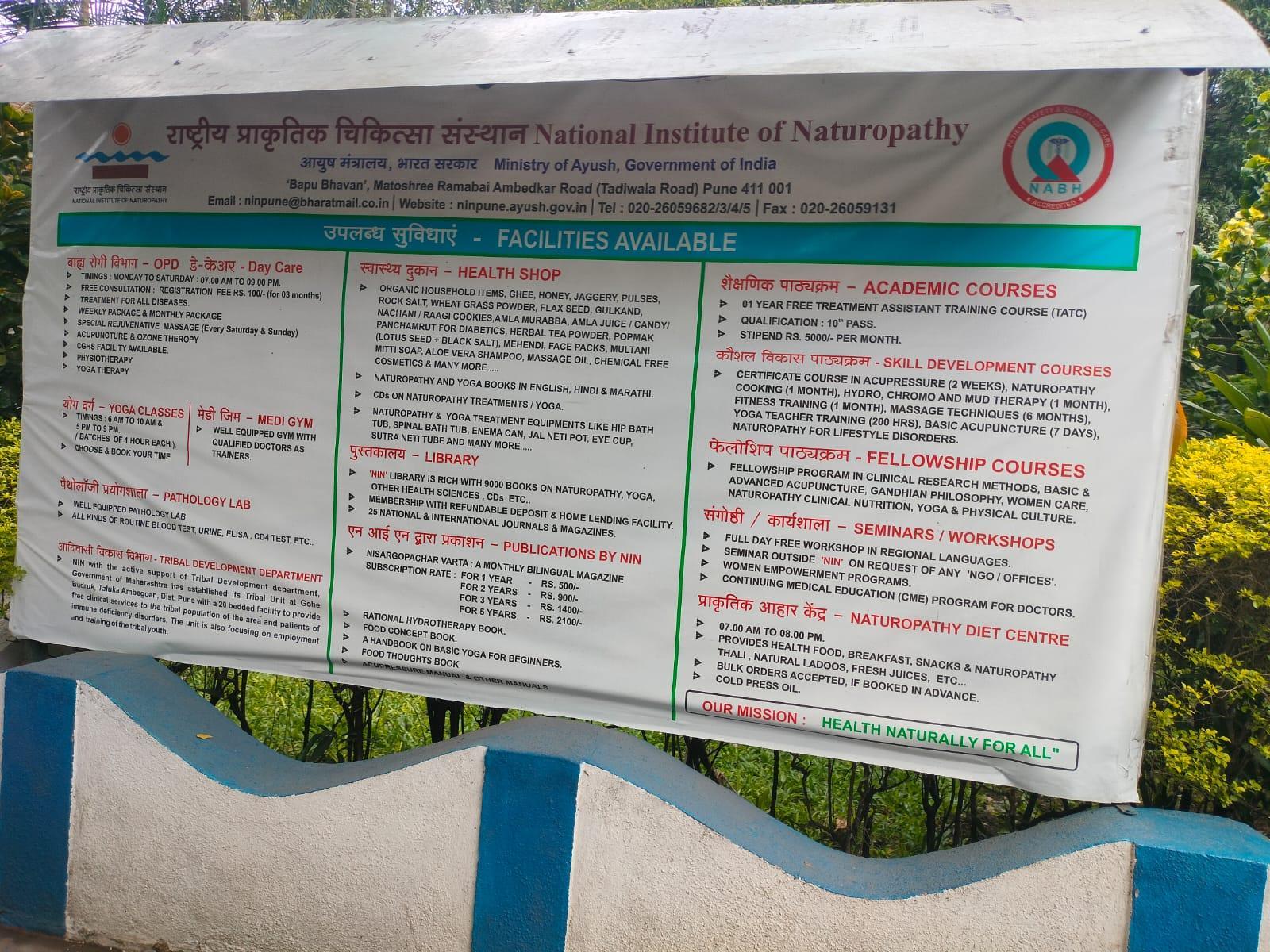
Dr. Mehta’s journey into naturopathy began with his own experience of overcoming chronic malaria through natural remedies, free from conventional medicine. Inspired by this success, he developed a comprehensive system of naturopathy that included therapies such as fasting, electrotherapy, mechanotherapy, mud therapy, and herbal remedies—each rooted in the healing power of nature.
Dr. Mehta’s influence extended significantly when he became Mahatma Gandhi’s physician. It is said that Gandhi’s health philosophy aligned deeply with Dr. Mehta’s approach, particularly regarding the body’s innate capacity for self-healing when given proper conditions. This belief in holistic healing through diet, lifestyle changes, and natural therapies became central to both men’s medical philosophy.
In 1944, he took residence at the clinic for 156 days in a bungalow now referred to as Bapu Bhavan. This stay was not only important for Gandhi’s health journey but also played a key role in promoting and endorsing naturopathic practices. His involvement helped raise the profile of nature cure therapy, further establishing its place within Pune’s healthcare framework.
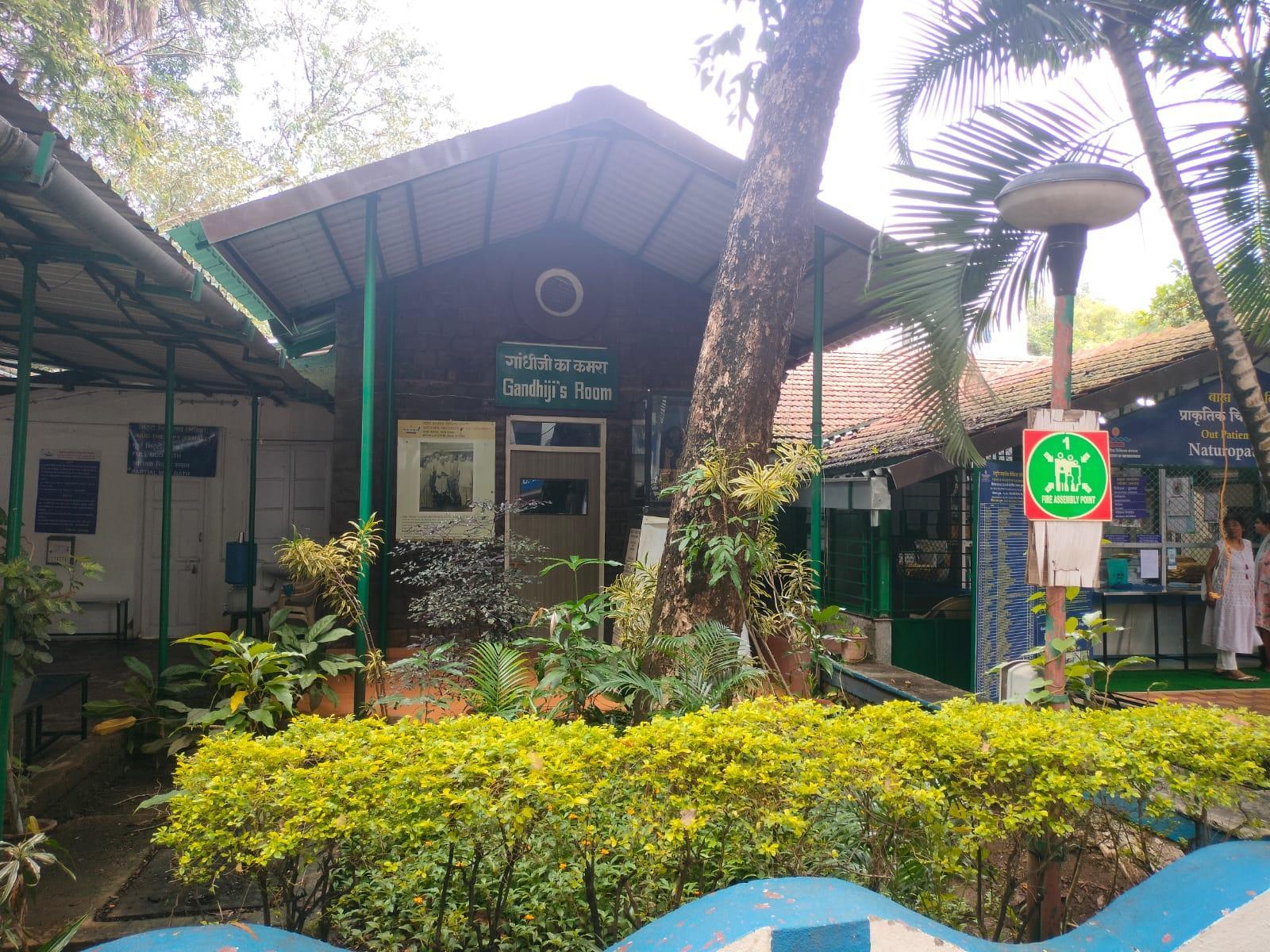
After Independence, the clinic transformed into the National Institute of Naturopathy, evolving into an autonomous body under the Ministry of AYUSH, Government of India. Today, it stands as a prominent institution drawing both patients and students from across the country. Maintaining its founding principles of accessible healthcare, the institute continues to offer treatments at subsidized rates. Its commitment to naturopathic principles extends to every aspect of care, including a canteen that serves simple, wholesome meals prepared without excessive spices. The National Institute of Naturopathy has gained significant popularity, and as a healthcare professional at the institute notes, the growing demand for its services has led to the establishment of a residential center in Kondhwa to accommodate more patients seeking naturopathic care.
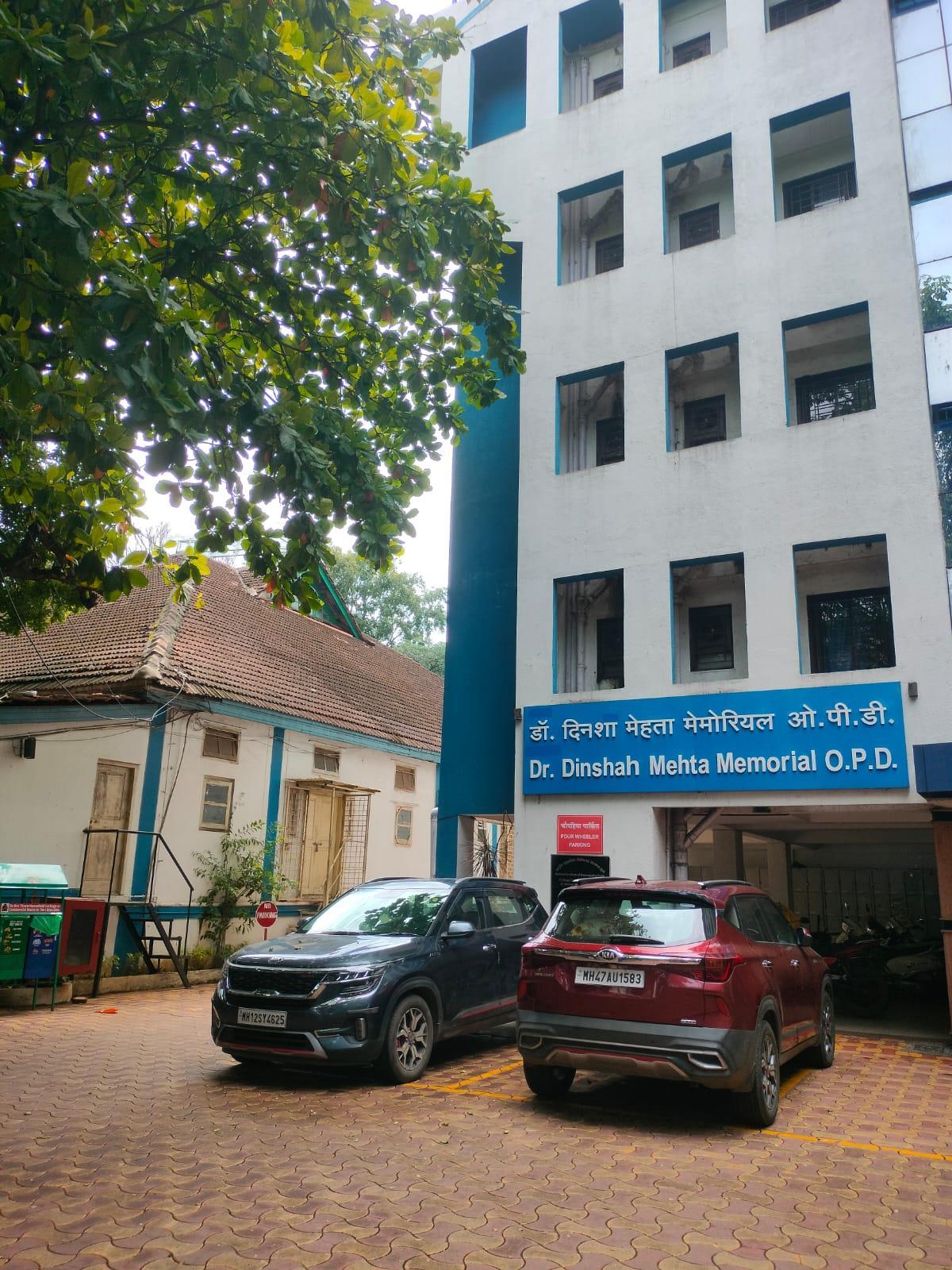
Medical Education & Research
Medical education and research are foundational to a district’s healthcare infrastructure. As Mathew Gerge aptly highlights, medical institutions often serve a “dual purpose,” which includes educating future healthcare professionals and providing healthcare services to the local population. Pune, often hailed as the “Oxford of the East,” is well-known for its educational infrastructure.
Staying true to this reputation, the district has emerged as a prominent hub for medical education and research. The district houses multiple institutions and research centers across various systems of medicine, attracting students from throughout India.
Armed Forces Medical College
Pune’s medical education landscape is distinctively influenced by its historical ties to the military, which date back to the early 19th century. The district is home to an institution, which is often referred to as “the first Armed Forces medical college in Asia.” The presence of cantonment areas across Pune, along with its growing status as an educational hub, may help explain why this pioneering institution was established here.
![Armed Forces Medical College[3]](/media/statistic/images/maharashtra/pune/health/armed-forces-medical-college3-976af310.png)
Established in 1948, the Armed Forces Medical College (AFMC) offers medical education alongside specialized training focused on the healthcare needs of the military. Known for producing skilled medical professionals, AFMC graduates serve in India and abroad, including in roles such as United Nations peacekeeping missions.
Byramjee Jeejeebhoy Government Medical College
Byramjee Jeejeebhoy Government Medical College (B.J. Medical College) is a public medical institution affiliated with Sassoon Hospital, one of Pune’s largest state-run hospitals. The college can be regarded as one of the oldest institutions dedicated to medical education in Pune.
When the Sassoon Hospital was established in 1867, a medical school was formed not long after in 1871. This school was later upgraded to a medical college in 1946. Alongside the medical college, the institution also houses a School of Nursing, which began before 1914 with an Auxiliary Nurse Midwife (ANM) course.
The college currently has around 26 departments, covering a wide range of medical specialties. In addition to its academic programs, the college is involved in various academic and research activities. In 1972, Prof. G. S. Mutalik established the Medical Genetics Center, described as “the first of its kind in Maharashtra.” The center focused on the diagnosis and treatment of genetic disorders. Notably, the center provided support for several prominent researchers. Among them was Dr. Sudam Kate, a medical scientist and Padma Shri awardee, whose large-scale population genetics studies across India contributed significantly to the understanding of sickle cell anemia and other genetic conditions.
Z V M Unani Medical College & Hospital
Pune is also home to the Z. V. M. Unani Medical College & Hospital, founded in 1984 by the Maharashtra Medical Education & Research Center. This college offers a unique opportunity for students to pursue education in Unani medicine, an ancient system of healing.
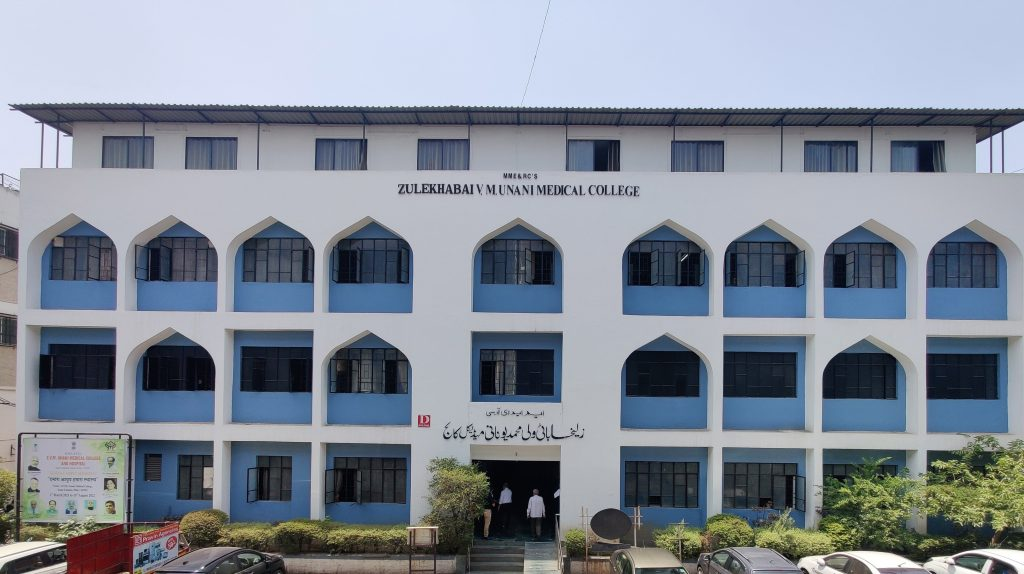
The institution is approved by the National Commission for Indian System of Medicine (NCISM) and is affiliated with the Maharashtra University of Health Sciences and the University of Pune. The college plays a crucial role in providing medical education to minority communities and contributes to the preservation and promotion of the Unani system of medicine.
The Maharashtra Institute of Medical Education and Research (MIMER)
The Maharashtra Institute of Medical Education and Research (MIMER) is a medical college located in Talegaon Dabhade. Established in 1995, the college offers undergraduate and postgraduate medical education. The college offers 22 medical departments, which include specialties such as Forensic Medicine and Toxicology, Psychiatry, and Community Medicine.
The college has an interesting history, rooted in the vision of a local figure, Dr. Bhausaheb Sardesai, years before its establishment. At a time when India was under British rule, Dr Sardesai founded a hospital in 1925 with the vision of making healthcare accessible and affordable for the local community. Alongside the hospital, it was his dream to establish a medical college in Talegaon. Through his partnership with the Maharashtra Academy of Engineering and Educational Research (MAEER) and M.I.T. Pune, this vision transformed into reality. Today, the hospital, renamed in his honor, alongside MIMER, forms an integrated campus that continues to uphold Dr. Sardesai’s vision of quality healthcare and medical education for Talegaon.
Dr. D.Y. Patil Medical College, Hospital & Research Centre
Dr. D.Y. Patil Medical College, Hospital & Research Centre, located in Pimpri, is part of the Dr. D.Y. Patil Vidyapeeth. The institution offers approximately 43 specialties across its MBBS, MD, MS, D.M./M.Ch., Ph.D., and MSc programs.
The college is recognized for its academic reputation and research focus. In 2018, the college earned a spot in the Guinness World Records for screening the highest number of individuals for hypertension within a single hour. Remarkably, in 2024, three scientists from Dr. from the college were listed among Stanford University’s Top 2% Global Researchers. The institution has also launched various innovative initiatives across various medical fields, such as breast cancer awareness and neonatal care. Notably, in November 2024, Dr. D.Y. Patil Medical College, Hospital & Research Centre established a human milk bank center, which, according to CSR Universe, “is the first of its kind in the Pimpri Chinchwad Municipal Area and one of only a few 24/7 operations in India.”
Regional Ayurveda Research Institute (RARI)
The Regional Ayurveda Research Institute (RARI) in Pune, established in 1961, operates under the Central Council for Research in Ayurvedic Sciences (CCRAS), Ministry of AYUSH. The institute’s state-of-the-art laboratories, accredited by NABL, facilitate testing of medicinal plants and Ayurvedic drugs. Within its research environment focused on traditional medicine systems, the institute explores areas including medicinal plant conservation, pharmacology, biochemistry, molecular biology, and Ayurvedic medicine standardization.
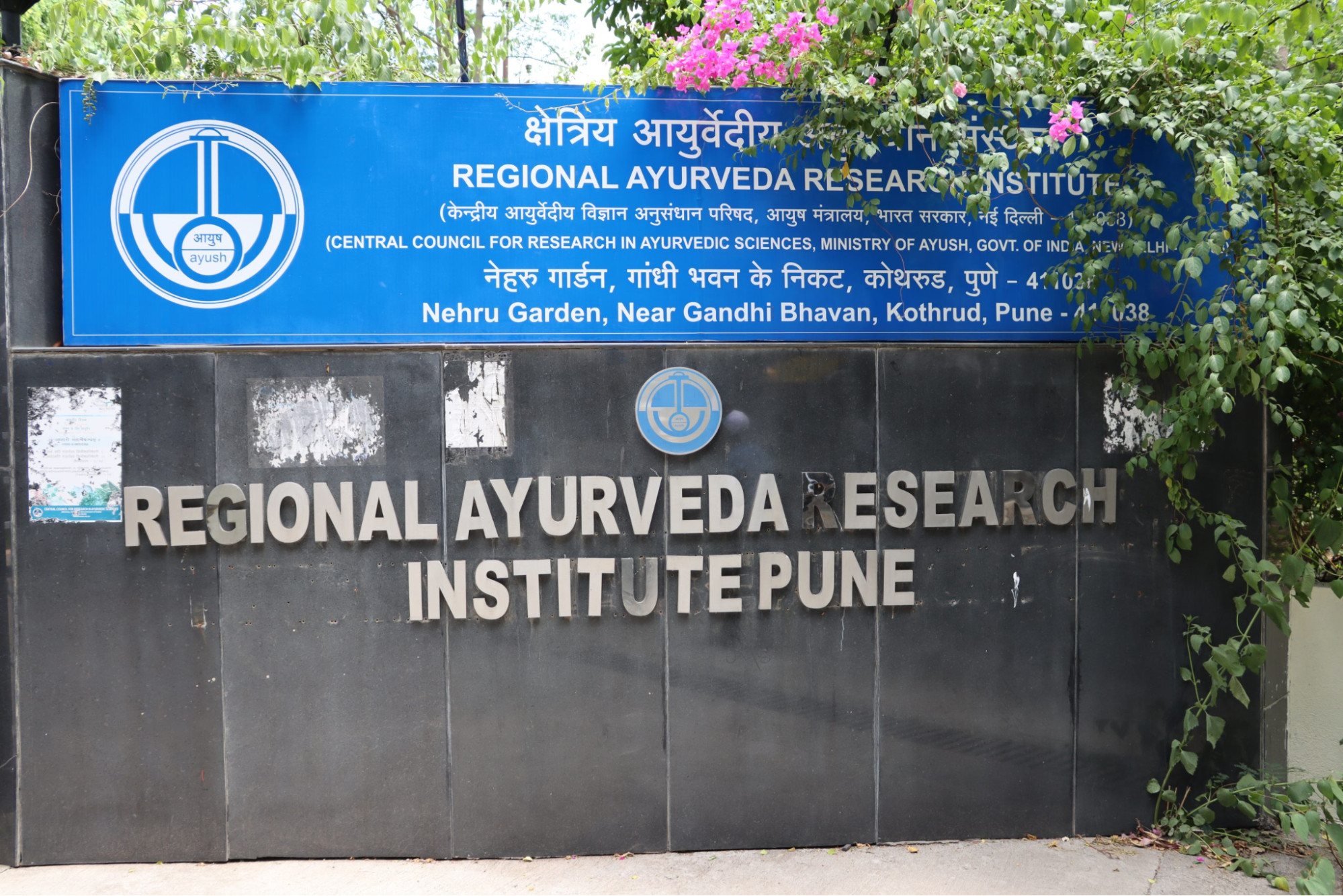
Medical Researchers & Scientists
Alongside educational institutions, Pune is also home to many researchers and medical scientists who have carved out their names in medical research.
Sudam Kate
Dr. Sudam Kate is a medical scientist, doctor, and social activist known for his pioneering work in sickle cell anemia research and advocacy. His research initiatives include large-scale population genetics studies focusing on sickle cell anemia and other genetic conditions, particularly among India’s Scheduled Tribe communities. Since 1972, he has been affiliated with Maharashtra Arogya Mandal (MAM) in Hadapsar, where he has treated over 3,000 sickle cell anemia patients, primarily from Scheduled Tribe (ST) communities across Maharashtra, Gujarat, and Madhya Pradesh.
In 1998, he established the Sickle Cell Dawakhana, a center that adopts a holistic approach to the treatment of sickle cell anemia, integrating Ayurveda with conventional medical treatments for diagnosis, counseling, and care. Dr. Kate’s contributions to public health have been widely acknowledged. In 2017, he was named “Sickle Cell Advocate of the Year” by the US-based NGO Sickle Cell 101. Two years later, he received the Padma Shri, one of India’s highest civilian awards, for his exceptional work in sickle cell anemia awareness and treatment.
History of Major Disease Epidemics & Outbreaks in Pune
Epidemics and disease outbreaks have significantly shaped public health outcomes throughout history, creating persistent challenges that communities have continuously sought to overcome. In the case of Pune district, documented historical records indicate several key outbreaks that impacted both the population’s health and mortality rates, particularly in the late 19th century under colonial rule. The district colonial gazetteer (1885) records the diseases that were contributing to the mortality rates of the era.
In the late 19th century, the Pune district faced recurring waves of infectious diseases. The colonial district gazetteer records particularly challenging periods through 1883, when fevers, cholera, and smallpox regularly affected the population. The year 1885 proved especially difficult, as the district confronted both cholera from May to October and a severe smallpox outbreak in February.
In response to these persistent health challenges, the district authorities began developing systematic healthcare interventions. It is recorded in the gazetteer that by 1883-84, they had established a structured vaccination program under the supervision of a deputy sanitary commissioner. The program deployed vaccinators throughout the region, reaching from the urban centers of Pune city and its cantonments to the surrounding rural areas. Medical officers at grant-in-aid dispensaries joined this effort, expanding the reach of preventive healthcare services.
Evolution into a Public Health Research Hub
During the latter half of the 20th century, multiple institutions dedicated to public health research were established in Pune. These institutions focus on disease research, diagnostics, and epidemiology, and have remarkably contributed to these fields on both national and international levels.
Serum Institute of India
Serum Institute of India (SII) is a multinational biotechnology and biopharmaceuticals company that was established in 1966. The institute is often dubbed as the “world’s largest vaccine manufacturer” (in terms of volume). Notably, as of 2023, SII manufactures approximately 1.9 billion vaccine doses annually. The institute was founded by Cyrus Poonawalla, a billionaire businessman from Pune, and operates as a subsidiary of the Cyrus Poonawalla Group. The company’s Hadapsar facility in Pune serves as its primary manufacturing center.
The institute was established during a period when India relied primarily on imported vaccines. Imported vaccines, consequently, meant that the drugs and vaccines were highly expensive and were “practically inaccessible to most of India’s population.” Poonawalla, at that time, recognized that developing domestic vaccine production capabilities could significantly reduce costs and increase accessibility across the country.
The institute commenced manufacturing in 1967 with tetanus vaccines at its Hadapsar facility in Pune. Through subsequent decades, the institute expanded its research and production capabilities. A significant development occurred in 2016 through its collaboration with MassBiologics of the University of Massachusetts Medical School, resulting in the creation of the Rabies Human Monoclonal Antibody (RMAb), also known as Rabishield. The institute’s role in vaccine manufacturing expanded significantly during the COVID-19 pandemic. In 2020-2021, it manufactured the Covishield vaccine for both domestic use and international distribution.
National Institute of Virology
Another institute from Pune, which has carved its name in the sphere of public health research and diagnosis, is the National Institute of Virology (NIV), a laboratory of the Indian Council of Medical Research (ICMR).
Located in the Pashan area, the institute houses one of Asia’s few Biosafety Level-4 (BSL-4) facilities. These facilities maintain the highest level of biosafety protection, designed for research on pathogens that can cause severe, life-threatening diseases.
![The National Institute of Virology in Pune[4]](/media/statistic/images/maharashtra/pune/health/the-national-institute-of-virology-in-pune4-10887436.jpg)
NIV conducts extensive viral research and disease surveillance activities. The institute’s primary functions include outbreak investigations, diagnostic support, and research on both emerging and established viral diseases. It also provides technical assistance to neighboring countries in areas of capacity building, surveillance, diagnostic services, and outbreak management.
Response to the COVID-19 Pandemic
The establishment of these institutions underscores Pune’s role as a key center for managing public health crises in India. The city’s medical infrastructure demonstrated its capabilities in handling epidemics and outbreaks. During the COVID-19 pandemic, Pune, as a major metropolis in Maharashtra, faced severe challenges. It recorded Maharashtra’s first active case and was the first to be declared a containment zone. The densely populated Peth areas had some of the highest caseloads, leading to strict containment measures.
Despite being an early hotspot, Pune became a hub for medical research and innovation. Scientists and researchers collaborated on strategies that had far-reaching impacts beyond the district. A coalition of volunteers from industry and academia worked with the Pune Municipal Corporation (PMC) to generate and analyze pandemic-related data. This scientific collaboration, involving institutions such as the Indian Institute of Science Education and Research (IISER) Pune, the National Chemical Laboratory, BJ Government Medical College, and the National Institute of Virology (NIV), was instrumental in managing the crisis. Pune leveraged these resources effectively, particularly during the second wave.
NIV, a premier Indian Council of Medical Research (ICMR) lab based in Pune, played a crucial role in decoding the coronavirus and its variants. The first active COVID-19 case in India, detected in Kerala, was identified early by NIV in January 2020. Its Biosafety Level-4 lab in Pashan was instrumental in isolating the virus strain.
Pune was also central to India’s vaccine efforts, which became the largest of their kind globally. Two vaccines—Covishield and Covaxin—were the pillars of this initiative. Covishield, developed by AstraZeneca and the University of Oxford, was manufactured at the Serum Institute of India (SII) in Hadapsar, while Covaxin was developed indigenously by NIV in collaboration with Hyderabad-based Bharat Biotech. SII played a critical role in scaling up production and ensuring vaccine supply for both domestic and international needs. India’s vaccine diplomacy, supported by Pune’s manufacturing capabilities, generated significant goodwill, particularly in the Global South.
![Serum CEO Adar Poonawalla tweeted this picture of Serum staff when the first Covishield shipments were loaded to be delivered to locations across India.[5]](/media/statistic/images/maharashtra/pune/health/serum-ceo-adar-poonawalla-tweeted-this-picture-_Z4f7UaO.jpg)
Sanitation | Public Toilets & Cleanliness
Sanitation has long posed a complex challenge across Pune district. While the district has seen significant development in physical infrastructure, concerns around the condition and maintenance of public sanitation facilities remain widespread.
Following the launch of the Swachh Bharat Abhiyan in 2014, the Pune Municipal Corporation (PMC) undertook large-scale efforts to improve sanitation infrastructure within Pune city. The PMC even developed a Public Toilet Policy Document to guide these efforts. These efforts were aimed at expanding access to sanitation and improving hygiene in public spaces. Similar initiatives were taken up by local bodies in other parts of the district.
Despite these developments, recent assessments highlight persistent issues, particularly related to upkeep and cleanliness. In several urban pockets—such as the commercial areas of JM Road and FC Road in Pune city—newly built toilet blocks are reported to be in poor condition, with complaints ranging from foul odours and overflowing trash to broken fixtures and dysfunctional flushing systems.
One of the key concerns raised by residents and civic observers is the shortage of sanitation workers, which has led to irregular cleaning schedules. Women’s toilets are often especially neglected, with maintenance reportedly carried out only once every two to three days in some cases. While the number of public facilities has grown, their usability remains limited due to poor upkeep.
This has led to public frustration, with some citizens filing complaints with institutions like the State Human Rights Commission (SHRC), citing lack of access to clean toilets as a breach of basic dignity and rights. The situation underscores a broader issue in the district: the need for sustained investment not only in constructing sanitation infrastructure but also in its regular maintenance and monitoring.
Graphs
Healthcare Facilities and Services
Morbidity and Mortality
Maternal and Newborn Health
Family Planning
Immunization
Nutrition
Sources
10.ANI News. 2022. "Jehangir Hospital Leading the Way with Comprehensive Stroke Care." The Print. .https://theprint.in/ani-press-releases/jehangir-hospital-leading-the-way-with-comprehensive-stroke-care/1166242/https://theprint.in/ani-press-releases/jehan…
11. Ruby Hall Clinic. 2025. "About Us." Ruby Hall Clinic, Pune.https://rubyhall.com/about-us#abouthttps://rubyhall.com/about-us#about
12.Umesh Isalkar. 2019. "District Home to Maximum Accredited Govt-Run PHCs." Times of India.https://timesofindia.indiatimes.com/city/pune/district-home-to-maximum-accredited-govt-run-phcs/articleshow/67548150.cmshttps://timesofindia.indiatimes.com/city/pun…
13.Pune Mirror Bureau.2018. "Pune District to Get Four Rural Hospitals." Pune Mirror.https://punemirror.com/others/pune-district-to-get-4-rural-hospitals/cid5132557.htmhttps://punemirror.com/others/pune-district-…
14.Punekar News. 2024. "Pune’s Growing Status as a Medical Hub Strains Healthcare Infrastructure." Punekar News.https://www.punekarnews.in/punes-growing-status-as-a-medical-hub-strains-healthcare-infrastructure/#:~:text=Compounded%20by%20the%20city's%20burgeoning,a%20strain%20on%20general%20infrastructure.https://www.punekarnews.in/punes-growing-sta…
15. Isaac Christiansen. 2017. Commodification of Healthcare and its Consequences. Vol. 8, No. 1.World Review of Political Economy.https://doi.org/10.13169/worlrevipoliecon.8.1.0082https://www.jstor.org/journal/worlrevipoliec…
16.Dr. S. N. Pandey's Website. "The Origin of Naturopathy.”https://drsnpandey.net/origin-of-naturopathy/https://drsnpandey.net/origin-of-naturopathy/
17.Pune Cultural Mapping Team. 2021. "National Institute of Naturopathy." Sahapedia.https://map.sahapedia.org/article/National-Institute%20of%20Naturopathy/2771https://map.sahapedia.org/article/National-I…
18.Dheeraj Bengrut. 2019. "Gandhi’s Connect with Nature at Pune’s National Institute of Naturopathy." Hindustan Times.https://www.hindustantimes.com/pune-news/gandhi-s-connect-with-nature-at-pune-s-national-institute-of-naturopathy/story-2haXV8K8qpzE8BceISmlUL.htmlhttps://www.hindustantimes.com/pune-news/gan…
20.George Mathew. 2023. "The Real Purpose of the Medical College." The Hindu.https://www.thehindu.com/opinion/op-ed/the-real-purpose-of-the-medical-college/article67232008.ecehttps://www.thehindu.com/opinion/op-ed/the-r…
21.Armed Forces Medical College. "History of AFMC." AFMC Pune.https://afmc.nic.in/#:~:text=The%20institute%20was%20set%20up,for%20the%20Indian%20Armed%20Forces.https://afmc.nic.in/#:~:text=The%20institute…
22. B. J. Government Medical College. "History of BJGMC." BJGMC Pune.https://www.bjgmcpune.org/history.htmlhttps://www.bjgmcpune.org/history.html
23. B. J. Government Medical College. "Nursing College History." BJGMC Pune.https://www.bjgmcpune.org/nursing-college-history.htmlhttps://www.bjgmcpune.org/nursing-college-hi…
24.B. J. Government Medical College. "Departments" BJGMC Punehttps://www.bjgmcpune.org/departments.htmlhttps://www.bjgmcpune.org/departments.html
25.Sanjeevani Knowledge and Research Foundation. n.d. "About Us." SKRF Pune.https://skrf.org/about.phphttps://skrf.org/about.php
26. ZVM Unani Medical College.n.d. "Home Page." ZVM Unani Medical College, Pune.https://www.zvmunanimchpune.org/https://www.zvmunanimchpune.org/
27. Maharashtra Institute of Medical Education and Research (MIMER).n.d. "Home Page." MIMER Pune.https://mimer.edu.in/https://mimer.edu.in/
29. Maharashtra Institute of Medical Education and Research (MIMER).n.d. "History." MIMER Pune.https://mimer.edu.in/history/https://mimer.edu.in/history/
30. Dr. D. Y. Patil Medical College. "List of Permitted Courses." Dr. D. Y. Patil Medical College, Pune.https://medical.dpu.edu.in/List-of-permitted-courses.aspxhttps://medical.dpu.edu.in/List-of-permitted…
31. Higher Education Digest Editorial Team.2020. "Dr. D. Y. Patil Medical College, Hospital & Research Centre: Serving Humanity with Excellence in Medical Education." Higher Education Digest.https://www.highereducationdigest.com/dr-d-y-patil-medical-college-hospital-research-centre-serving-humanity-with-excellence-in-medical-education/https://www.highereducationdigest.com/dr-d-y…
32. Dr. D. Y. Patil Medical College. "Recognition and Ranking" Dr. D. Y. Patil Medical College, Punehttps://medical.dpu.edu.in/ranking.aspxhttps://medical.dpu.edu.in/ranking.aspx
33.ANI News. 2024. "Three Scientists from Dr. D. Y. Patil Medical College Shine Among Stanford University’s Top 2% Global Researchers for 2024." ANI News.https://www.aninews.in/news/business/three-scientists-from-dr-dy-patil-medical-college-shine-among-stanford-universitys-top-2-global-researchers-for-202420241010104642/https://www.aninews.in/news/business/three-s…
34.Ruchika Kumar. 2024. A Lifeline for Tiny Lives: Dr. D. Y. Patil Medical College’s Pioneering Human Milk Bank. The CSR Universe.https://thecsruniverse.com/articles/a-lifeline-for-tiny-lives-dr-d-y-patil-medical-college-s-pioneering-human-milk-bankhttps://thecsruniverse.com/articles/a-lifeli…
35.Anuradha Mascarenhas. 2023. “A unique forest full of medicinal plants comes up in Pune — thanks to Ayurveda researchers.”The Indian Express.https://indianexpress.com/article/cities/pune/pune-medicinal-plants-forest-ayurveda-researchers-8629677/https://indianexpress.com/article/cities/pun…
36. Central Council for Research in Ayurvedic Sciences (CCRAS). "Regional Ayurveda Research Institute (RARI), Pune." CCRAS, India.https://ccras.nic.in/hi/rari-pune/https://ccras.nic.in/hi/rari-pune/
37. Sanjeevani Knowledge and Research Foundation. "About Us." SKRF Pune.https://skrf.org/about.phphttps://skrf.org/about.php
38. OneSCDVoice.n.d. "Sudam L. Kate - M.Sc., Ph.D." OneSCDVoice.https://www.onescdvoice.com/people/sudam-l-kate-m-sc-ph-d/https://www.onescdvoice.com/people/sudam-l-k…
39. Indian Express. 2017. "Dr. Kate Receives 2017 Sickle Cell Advocate of the Year Award." Indian Express.https://indianexpress.com/article/cities/pune/dr-kate-receives-2017-sickle-cell-advocate-of-the-year-award-4699566/https://indianexpress.com/article/cities/pun…
41.Olivia Choo. 2022. "How This Millennial CEO Steered Serum Institute of India During COVID." CNBC News.https://www.cnbc.com/2022/12/16/how-this-millennial-ceo-steered-serum-institute-of-india-during-covid.htmlhttps://www.cnbc.com/2022/12/16/how-this-mil…
42. Cyrus Poonawalla Group.n.d. "Our Companies: Serum Institute of India." Cyrus Poonawalla Group.https://www.cyruspoonawallagroup.com/our-companies/serum-institute-of-india.phphttps://www.cyruspoonawallagroup.com/our-com…
43.Umesh Isalkar. 2016. "Fast-Acting Anti-Rabies Drug Set for India Launch." The Times of India.https://timesofindia.indiatimes.com/city/pune/Fast-acting-anti-rabies-drug-set-for-India-launch/articleshow/51114312.cmshttps://timesofindia.indiatimes.com/city/pun…
44.Murli Krishnan. 2020. "Coronavirus Vaccine: Why Does India's Serum Institute Have a Head Start?" DW News.https://www.dw.com/en/coronavirus-vaccine-why-does-indias-serum-institute-have-a-head-start/a-55089750https://www.dw.com/en/coronavirus-vaccine-wh…
45. National Institute of Virology (NIV). "About Us." Indian Council of Medical Research (ICMR), NIV Pune.https://niv.icmr.org.in/https://niv.icmr.org.in/
46.Smruti Koppikar. 2020. “Pune’s harsh covid strategy rubs people the wrong way.”Mint,https://www.livemint.com/news/india/pune-s-harsh-covid-strategy-rubs-people-the-wrong-way-11587578562029.html.https://www.livemint.com/news/india/pune-s-h…
48.Anuradha Mascarenhas. 2023. “Former epidemiology head of ICMR recalls how women scientists rose to challenge during Covid.”The Indian Express, 08 Oct. 2023,https://indianexpress.com/article/cities/pune/former-epidemiology-head-of-icmr-recalls-how-women-scientists-rose-to-challenge-during-covid-8972971/.https://indianexpress.com/article/cities/pun…
49.Bharat Biotech. “COVAXIN - India’s First Indigenous COVID-19 Vaccine.”Bharat Biotech,https://www.bharatbiotech.com/covaxin.html#:~:text=COVAXIN%C2%AE%2C%20India's%20indigenous,Institute%20of%20Virology%20(NIV).https://www.bharatbiotech.com/covaxin.html#:…
5.Atikh Rashid.2023. "Sassoon Hospital: A Jewish Merchant’s Enduring Gift to Pune, Which He Didn’t Live to See." Indian Express.https://indianexpress.com/article/cities/pune/sassoon-hospital-a-jewish-merchants-enduring-gift-to-pune-which-he-didnt-live-to-see-8931738/https://indianexpress.com/article/cities/pun…
50.Anuradha Mascarenhas and Vaishnavi Pawar. 2023 “Looking for a clean and functioning public toilet in Pune.”The Indian Express, 17 Mar. 2023,https://indianexpress.com/article/cities/pune/clean-functioning-public-toilet-pune-8501890/.https://indianexpress.com/article/cities/pun…
51.Vicky Pathare. 2023. “Punekars protest lack of public toilets, approach State Human Rights Commission.”Hindustan Times.https://www.hindustantimes.com/cities/pune-news/residents-claim-pune-civic-body-fails-to-provide-public-toilets-violating-fundamental-rights-101690484915837.html.https://www.hindustantimes.com/cities/pune-n…
6.Rupsa Chakraborty. 2023. "State to Get a Mental Health Hospital After 100 Years with Hi-Tech Facilities." Indian Express, India.https://indianexpress.com/article/cities/mumbai/state-to-get-a-mental-health-hospital-after-100-years-with-hi-tech-facilities-8669827/https://indianexpress.com/article/cities/mum…
7.Nozia Sayyed. 2025. "State Health Minister Slams Yerawada Mental Hospital for Appalling Conditions." Pune Mirror, India. .https://punemirror.com/pune/health/pune-news-state-health-minister-slams-yerawada-mental-hospital-for-appalling-conditions/cid1735977210.htm#google_vignettehttps://punemirror.com/pune/health/pune-news…
8. Maharashtra Institute of Mental Health. 2025. "About Us." MIMH Pune.https://www.mimhpune.org/https://www.mimhpune.org/
9. Jehangir Hospital. 2025. "About Us." Jehangir Hospital, Pune.https://www.jehangirhospital.com/https://www.jehangirhospital.com/
Aditi Pai. 2014. "Best Cities 2014: Pune Healthcare - The Health Hub with Top Facilities and Emergency Services." India Today.https://www.indiatoday.in/magazine/nation/story/20141201-best-cities-2014-pune-healthcare-health-hub-facilities-emergency-services-806022-2014-11-20https://www.indiatoday.in/magazine/nation/st…
Gazetteers of the Bombay Presidency. 1885 (Reprinted in 1992, e-Book Edition 2006). Gazetteers of the Bombay Presidency: Poona District, Vol XVIII. Gazetteer Department, Government of Maharashtra, Mumbai.
M Choksi, B. Patil et al. 2016.Health systems in India.Vol 36 (Suppl 3).Journal of Perinatology.https://pmc.ncbi.nlm.nih.gov/articles/PMC514…
Maharashtra Institute of Medical Education and Research (MIMER).n.d. "Departments." MIMER Pune.https://mimer.edu.in/departments/https://mimer.edu.in/departments/
Maharashtra State Gazetteers. 1954.Gazetteers of Bombay State: Poona District, Revised ed.Gazetteers Department, Government of Maharashtra, Mumbai.
Vicky Pathare. 2024. "Pune Has Adequate Facilities to Be Developed as a Medical Tourism Hub." Hindustan Times.https://www.hindustantimes.com/cities/pune-news/pune-has-adequate-facilities-to-be-developed-as-medical-tourism-hub-101704566199697.htmlhttps://www.hindustantimes.com/cities/pune-n…
Last updated on 26 July 2025. Help us improve the information on this page by clicking on suggest edits or writing to us.